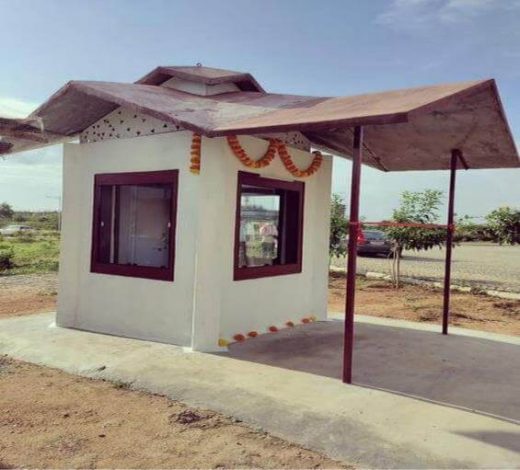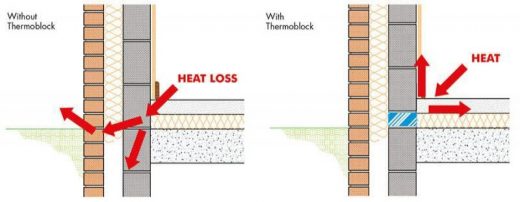Introduction
The role of drones in construction is new and something which can bring revolution to the construction world. Earlier all the work had to be executed manually starting from drawing to building houses or detecting structural defects that arise from time to time. All these have been replaced by technology to a large extent. Calculations like building estimates needed extensive time in calculating with the help of a pen, paper, and calculator but now software is available that reduces time and effort for doing cumbersome calculations. Similarly, drones provide various advantages that are beneficial for saving time and labor work. Not only this, accuracy in work increases, and better perception of the ongoing work is facilitated. All the pros and cons along with additional data are discussed here.
Recently, the first bio-brick-based building in India was inaugurated at IIT Hyderabad on 2nd September 2021. It is a part of the project BUILD (Bold Unique Idea Lead Development) to demonstrate the strength and versatility of the material. It is a sample building that is made of bio-bricks and supported by a metal framework. It is a perfect example of “wealth from waste”. The roof of the sample building is made of bio-bricks over PVC sheets. It helps to reduce heat. The inside and outside walls of the house are cement plastered to protect the bio-bricks from rain.

Fig 1: India’s first bio-brick based building, IIT Hyderabad
Introduction:
The movement of heat across an object that is more conductive than the materials it is surrounded by is referred to as thermal bridging. Heat flows through a path of least resistance created by the conductive material. Thermal bridging can be a significant cause of energy loss in homes and buildings, resulting in increased utility bills. The object’s overall thermal resistance is reduced as a result of thermal bridges. Thermal bridges result in heat transfer into or out of conditioned space and are commonly discussed in the context of a building’s thermal envelope.

Fig 1: Concept of Thermal Bridge
Source: Civil Engineering Quora
Practically no building is perfectly fire-proof. Because every building contains some materials which can catch fire easily. The perspective of the architect or engineer should be to plan, design, and construct the building such that it ensures the safety of occupants from the outbreak of fire due to any reason. The fire resistance of a building is expressed in terms of hours when it is subjected to fire of known intensity. Fire protection word is used to cover the following aspects:
- To prevent fire and reduce the number of outbreaks of fire.
- To reduce the fire both externally and internally.
- Use of fire extinguishing apparatus.
Nowadays, sustainability has become a primary concern in our daily lives due to its hazardous environmental impact. Therefore, people worldwide have started opting for sustainable homes as it leads to low energy consumption, low cost in maintenance of homes, saving natural resources for future generations, etc. This small step can be a giant leap for humanity towards sustainable living.
A sustainable home is an efficient, resource-friendly, energy-efficient, and water-efficient home that will last with quality systems. Low-impact, high-performance materials are used in sustainable homes that contribute significantly to the environment. Some points are essential that matters the most, i.e., size, location, orientation, outlook, transportation, infrastructure, recyclable materials, and many more.
Introduction
Any pipe or tube designed to transport treated drinking water to consumers is referred to as a water pipe. Large diameter main pipes that supply entire towns, smaller branch lines that deliver a street or group of buildings, and small diameter pipes located within individual buildings are all examples. When plumbing was first introduced into homes in the United States in the early twentieth century, materials such as cast iron, terra-cotta, copper, and galvanized steel were used. Lead piping was also popular and was the preferred material for plumbing pipes until World War II. However, as the public’s understanding of lead poisoning grew, the use of lead piping declined, particularly for potable water. After WWII, galvanized screw piping became the preferred material for plumbing pipes inside the home, and copper gained popularity a few decades later, in the 1970s. Polybutylene was introduced later in the 1970s. It was later discovered that this material is harmed by chlorine exposure, so it is now prohibited in many building codes. Earlier, clay pipes were utilized by the Greeks to bring water to their dwellings and public structures.
INTRODUCTION
The word Plastic is derived from the Greek word plastikos meaning capable of being shaped or moulded. They comprise of wide range of semi-synthetic or fully synthetic organic compounds that are malleable, durable and cheap. In the case of developed economies, one-third of plastic is used in packaging and also in buildings such as plumbing or vinyl siding or in plumbing. Plastics have evolved from using natural plastic materials such as chewing gum to chemically modified raw materials such as natural rubber, collagen, galalite, nitrocellulose. It is then finally transformed into fully synthetic molecules such as synthetic molecules bakelite, epoxy, polyvinyl chloride, etc. In the Middle Ages, cattle horns were used as windows for lanterns, while expanded polystyrene was used for buildings isolation which Dow Chemical invented in 1954. As times are changing uses of plastics are being modified keeping in mind the properties, advantages, disadvantages and uses.
Green building is a practice of construction which uses the processes responsible for environment friendly and efficient in resource usage through the life cycle of building starting from design, construction, operation, maintenance, renovation and till deconstruction process. In recent years, green architecture has attracted the attention of many contemporary architects and designers in the world. The aim of this concept is to increase green space in urban areas and greater efficiency in buildings especially in cities. It is a step for the survival of human interaction and environment which is derived from the concept of sustainable development in harmony with environmental compatibility to meet the needs of people.
Need for Green Building:
Maximum use of fossil energy and explosive growth of greenhouse gases are the main cause of global warming today. On the other hand, the increasing population of the world as a result of indiscriminate construction has faced cities with serious problems of air pollution. With the population growth, increasing development of cities and subsequent destruction of green spaces has increased the need to find ways to coexist with nature which will conserve energy, prevent land pollution, and reduce energy consumption. Now-a-days vertical housing has become the solution for fulfilling the housing need in urban areas. According to the World Green Building Council’s report, buildings contribute to 33% of carbon dioxide emission, 17% of water consumption, 25% of wood consumption, 30-40%of raw material consumption, and 40-50% of energy consumption in its construction process and operation. Therefore based on these facts, an environmentally sound construction and development should be considered to reduce the energy consumption. So the Green Building concept is being a trusted way to solve this issue. It is said that the building construction companies produce the second largest amount of greenhouse gases (30-40%) and demolition waste. The major energy consumption in building comes from modern lifestyle equipment like air-conditioning system, cooler, water heating to provide comfort to building occupants etc. These all add to pollution. Occupant activities also generate large amount of solid waste and water waste as well. As compared to a regular structure, a green building uses less energy, less water and other natural resources which create less waste and greenhouse gas and provides a healthy living place for people.
Introduction
A shipping container home is a structure made of steel shipping containers, which are large, reusable and are used to transport goods. Shipping containers come in two sizes: 20 ft. × 8 ft. and 40 ft. x 8 ft. The 20-foot shipping containers have 160 square feet of living space, while the 40-foot cargo containers have 320 square feet. These containers can be used as a solo home or personal office or combined to create a multilevel residence.
Shipping container homes, along with tiny houses, RVs, and silos, are becoming increasingly popular as potential homeowners look for alternatives to the traditional multi-bedroom house. Because of the strength, durability, affordability, and sustainability of recyclable materials, shipping container homes and structures are becoming more common in our day. These are practically universally available, and these are significantly cheaper near ports.
Asphalt will deteriorate almost quickly, causing road distresses to appear, regardless of how well a road is designed. Traffic, dampness, and a lack of preventive maintenance treatment are all factors that speed up the deterioration of a road. Depending on the method used, mending a pothole on the road might be simple or complex. In some circumstances, dumping a mixture into a pothole, compacting it with a shovel, and turning away is a simple procedure. In other cases, pulverizing the pothole and laying down new pavement may be necessary. The sort of asphalt repair procedure required is determined by the nature and severity of the damages to an asphalt road. It is important to note that the longer it is taken to repair damaged asphalt, the worse the damage will become. Extensive damage is also more expensive since it necessitates more difficult repair methods, including removal, replacement, or resurfacing. As a general guideline, it is essential to inspect asphalt road for damage once a week or once a month, depending on how much traffic it receives. Parking lots with a lot of traffic will undoubtedly require more upkeep than those with less traffic. Thus, it is necessary to implement procedures as per the hole sizes along with their nature.
Read More
